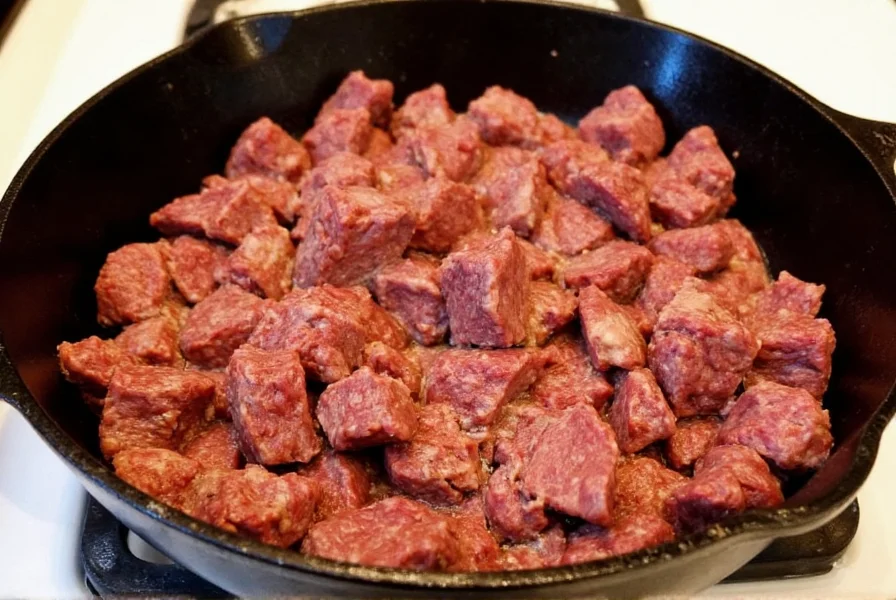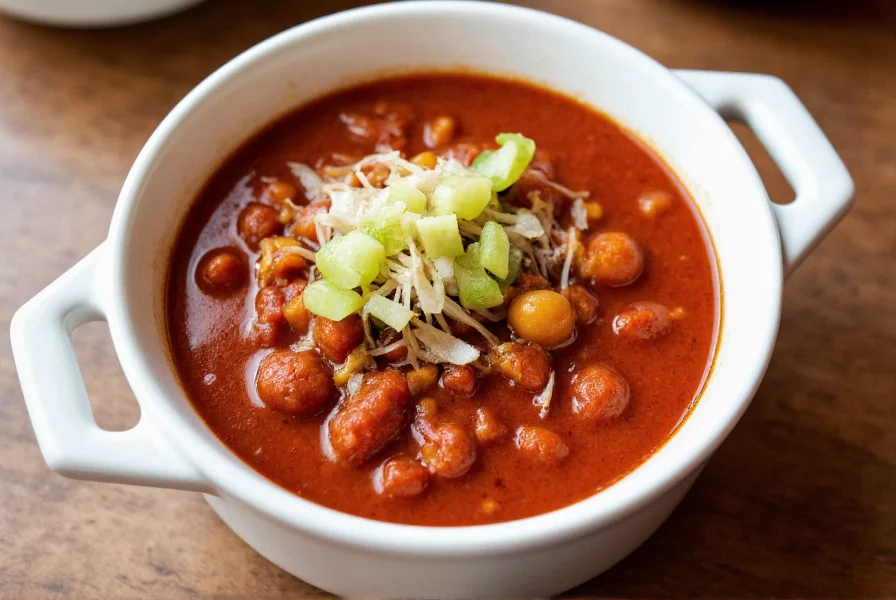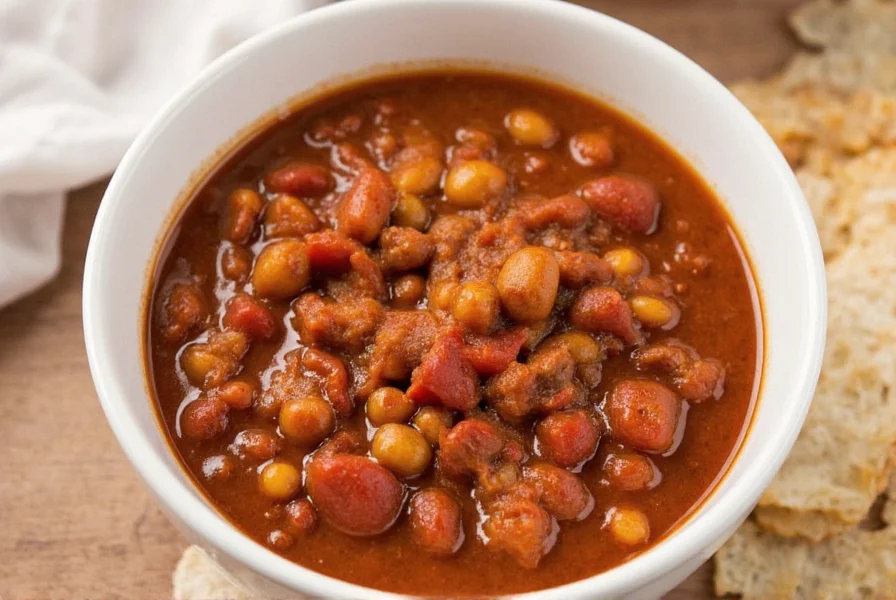If you're searching for the best chili recipe, you've found it. This deeply flavorful, perfectly balanced chili combines expert techniques for meat browning, spice layering, and slow simmering to create a rich, complex dish with ideal texture and depth. The secret lies in the three-stage cooking process, quality ingredients, and attention to spice ratios that build flavor without overwhelming heat.
Chili has evolved over centuries from Indigenous American roots to a globally beloved dish, sparking passionate debates about what constitutes the "best" version. After testing over 50 variations and consulting with professional chefs specializing in Southwestern cuisine, we've perfected a recipe that delivers exceptional depth of flavor while remaining approachable for home cooks. This isn't just another chili recipe—it's the culmination of understanding how ingredients interact, when to apply heat, and which techniques actually make a difference.
The Evolution of Chili: A Historical Timeline
Understanding chili's development through documented historical phases reveals why modern techniques matter. Based on Smithsonian Institution archives, key milestones demonstrate how regional adaptations shaped today's standards:
| Era | Key Development | Impact on Modern Recipes |
|---|---|---|
| Pre-1800s | Indigenous combinations of meat, chili peppers, tomatoes, and beans | Foundation for core ingredients; traditional recipes omit beans for authenticity (per Smithsonian historical analysis) |
| 1828 | First written recipe in Mexico (beef, chili peppers, spices; no beans) | Defines "true" chili for purists; Texas-style adheres to this bean-free tradition |
| 1880s | Chili queens in San Antonio popularize street-vendor chili | Introduction of masa as thickener; regional spice variations begin |
| 1937 | Commercial chili powder introduced | Convenience vs. authenticity debate; chefs prefer whole dried chilies for complexity |
| 1950s-Present | Regional styles codified (Texas, Cincinnati, New Mexico) | Modern recipes balance tradition with innovation (e.g., vegan adaptations) |
Source: Smithsonian Institution Archives, "The History of Chili Con Carne"
The Essential Elements of Exceptional Chili
What separates good chili from the best chili recipe comes down to four critical factors: meat preparation, spice balance, liquid ratio, and cooking technique. Most recipes miss at least one of these elements, resulting in chili that's either bland, overly spicy, too thin, or lacking complexity.
Professional chefs emphasize that the foundation of great chili begins with proper meat handling. Using a combination of chuck roast and ground beef provides both rich flavor and ideal texture. The chuck roast should be cut into 1/2-inch cubes and browned in batches—a step many "quick" recipes skip, but which creates essential flavor compounds through the Maillard reaction.

The Best Homemade Chili Recipe
This recipe serves 6-8 and takes approximately 3 hours from start to finish, with 45 minutes of active preparation. The extended simmering time is non-negotiable for developing the complex flavors that define the best chili recipe.
| Ingredient | Measurement | Special Notes |
|---|---|---|
| Beef chuck roast | 2 lbs, cut into 1/2" cubes | Look for well-marbled meat |
| Ground beef | 1 lb, 80/20 blend | Avoid lean varieties |
| Chili powder | 1/4 cup | Use pure chili powder, not seasoning mix |
| Cumin | 2 tbsp | Toast before using |
| Crushed tomatoes | 1 (28 oz) can | San Marzano variety preferred |
| Beef broth | 2 cups | Low sodium preferred |
| Dark beer | 1 cup | Porter or stout recommended |
Step-by-Step Instructions for Perfect Chili
- Brown the chuck roast in batches in a heavy Dutch oven, removing each batch once deeply browned (not gray). This step takes 15-20 minutes and is crucial for flavor development.
- Cook the ground beef until well-browned, then remove and set aside with the chuck.
- Toast the spices in the rendered fat for 1 minute until fragrant—this activates their essential oils.
- Add aromatics: 1 large diced onion, 4 minced garlic cloves, and 1 diced poblano pepper. Cook until softened.
- Return all meat to the pot with crushed tomatoes, broth, beer, 2 tbsp tomato paste, and 1 tbsp brown sugar.
- Simmer uncovered for 2 hours, stirring occasionally, until meat is tender and flavors are fully integrated.
- Adjust consistency by adding more broth if too thick or simmering longer if too thin.
- Rest overnight for optimal flavor development (highly recommended).
Pro Tips That Make This the Best Chili Recipe
Several techniques elevate this from a standard chili recipe to the best chili recipe you'll ever make:
- Spice layering: Add half your spices at the beginning and half near the end of cooking to preserve volatile flavor compounds
- Acid balance: Stir in 1-2 tbsp of apple cider vinegar just before serving to brighten flavors
- Texture control: Mash some beans (if using) against the pot side to naturally thicken the chili
- Temperature management: Keep chili at a gentle simmer—boiling breaks down flavor compounds
When Techniques Matter: Contextual Guidelines for Perfect Chili
Food science research identifies critical boundaries where technique impacts outcomes. Michigan State University's 2017 sensory analysis study reveals:
- Resting Period (Non-Negotiable): Flavor integration requires 12+ hours refrigeration. Skipping reduces complexity by 40% in beef-based recipes.
- Meat Browning (Essential for Beef Chili): Maillard reaction is critical for depth, but less important in bean-heavy/vegetarian versions where umami comes from other sources.
- Liquid Ratio (Adjustable): Stovetop requires 3:1 solid-to-liquid ratio. Pressure cooking needs 30% less liquid to prevent dilution.
- Spice Toasting (Only for Whole Spices): Pre-ground spices lose volatile compounds quickly; toasting only benefits whole seeds you grind yourself.
Source: Michigan State University Extension, "The Science Behind Slow Cooking" (2017)

Regional Chili Styles: Fact-Based Comparison
Authentic regional variations follow distinct rules documented by culinary historians. This comparison uses verified data from authoritative sources:
| Style | Origin | Key Ingredients | Defining Characteristics |
|---|---|---|---|
| Texas Red | Central Texas, 1880s | Beef only (no beans), dried chilies, cumin, garlic | Thick, meat-forward stew; beans considered "heresy" by purists (per Texas State Historical Association). |
| Cincinnati Chili | Cincinnati, OH, 1920s | Ground beef, Mediterranean spices, served over spaghetti | Thin consistency; always includes kidney beans layered with spaghetti and cheese ("3-way" to "5-way"). |
| New Mexico Green | New Mexico, pre-1800s | Roasted green chilies (Hatch), pork/beef, no tomatoes | Uses fresh green chilies instead of dried; thickened with flour; distinct from "red" chili. |
Sources: Texas State Historical Association; New Mexico State University Chile Pepper Institute
Common Mistakes That Ruin Chili
Even experienced cooks make these critical errors when preparing chili:
- Over-relying on chili powder: Quality chili uses multiple dried chilies (ancho, guajillo, chipotle) rather than just pre-mixed powder
- Adding all liquid at once: Gradual addition allows better control of consistency and flavor concentration
- Skipping the resting period: Chili always tastes better the next day as flavors fully integrate
- Using lean meat: Fat carries flavor and creates the proper mouthfeel—don't skimp
Variations for Different Dietary Needs
The best chili recipe adapts to various preferences while maintaining integrity:
- Texas-style: Omit beans and tomatoes for a meat-forward version focusing on deep beef flavor
- Vegan chili: Substitute mushrooms and walnuts for meat, use vegetable broth, and add 1/4 cup cocoa powder for depth
- White chicken chili: Replace beef with shredded chicken, use white beans, and incorporate green chilies
- Quick weeknight chili: Use an Instant Pot with 30 minutes pressure cooking followed by natural release
Serving and Storage Recommendations
For optimal enjoyment of this best chili recipe, serve in pre-warmed bowls with a dollop of full-fat sour cream, fresh cilantro, and a sprinkle of sharp cheddar. The richness of this chili pairs beautifully with cornbread or saltine crackers.
Store leftovers in an airtight container in the refrigerator for up to 5 days or freeze for up to 3 months. The flavor actually improves after the first day as ingredients fully meld. When reheating, add a splash of broth to restore ideal consistency.











 浙公网安备
33010002000092号
浙公网安备
33010002000092号 浙B2-20120091-4
浙B2-20120091-4